What the heck is the Sacred Valley of Peru? How about dark mountains filled with howlin’ banshees and jumpin’ she-devils (think: flying monkeys). Then, what if all these agents of Satan surround an Angel-protected green valley below? No, too extreme. Think of Moses leading his people through the a desert: but this time, a fertile desert — lush and green. No, that’s not it. What if the Sacred Valley is some sort of sexual imagery? Sorry, this is a family oriented website — no further discussion allowed.
December, 2021. Obviously, none of these options are correct. In truth, the Sacred Valley is the spiritual and temporal home of the Incas. Located in Peru’s Andean highlands; the Sacred Valley is bounded by the ancient citadel of Machu Picchu to the north, and the major town of Cusco to the south, Stretching for more than 60 miles east to west, the Sacred Valley encompasses some of the most stunning scenery in all of Peru. The valley was carved over hundreds of millennia by the Urubamba River. The river is fed by mountain streams created by melting snow high above. In the language of the Quechua people, Urubamba means “sacred river,” which helped give the valley its name. The banks of the Urubamba are lined by lush, rolling meadows that serve as a sanctuary from the harsh and demanding Andes on one side; and the hot and humid Amazon river basin on the other.
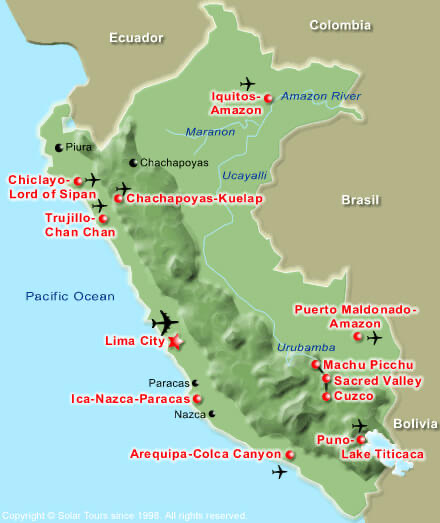
Left: Map of Peru and the Sacred Valley is sandwiched between Machu Picchu and Cusco on the lower right of map. Highlights in red are the main archeology sites and modern-day Indigenous centers, such as Iquitos town in the Amazon as noted in the upper right of map
Below: Close-up map of the Sacred Valley. This article talks about the main focal points in this map, from upper left: Ollantaytambo, Urubamba town, Pisac, Moray, Chinchero and Cusco. This travelogue author has been to all these sites, except Moray, for which he relies on written material by others. Note: Macu Picchu is just to the left of Ollantaytambo, but not on the map.
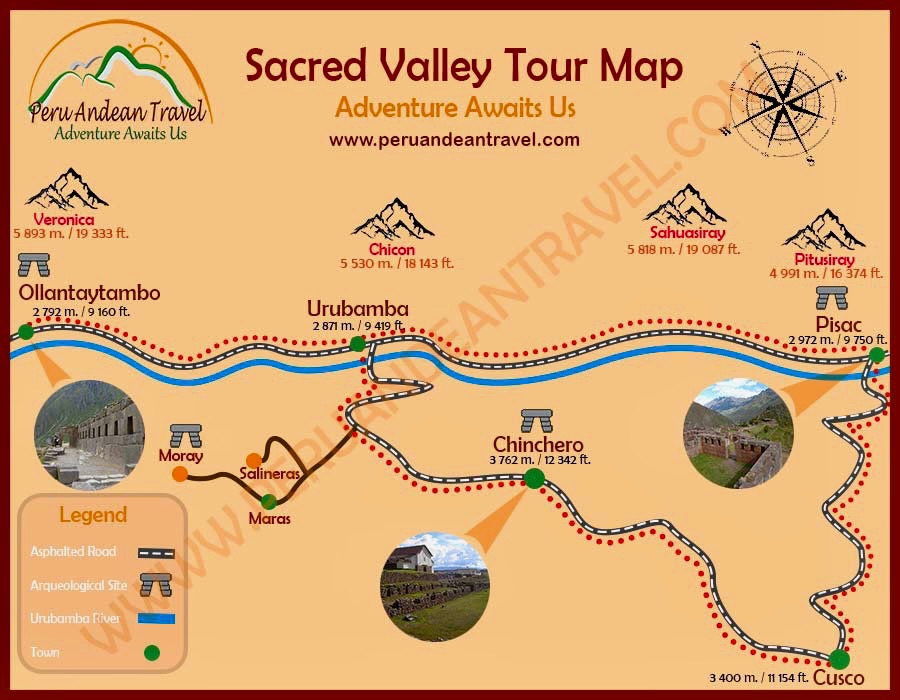
As mentioned, the Sacred Valley was the capital and center of the Incan Empire. By the way, the Incans are not extinct. The Incan Empire was just violently overthrown by mauruding invaders (the Spanish) in the 15th-16th century but the Incans did not just fade away. The Incans still exist today as the modern-day Quechan Indians and related tribes. The Quechan successors are still in their ancestral homeland – the Sacred Valley. According to Brittanica.com: “The descendants of the Inca are the present-day Quechua-speaking peasants of the Andes, who constitute perhaps 45 percent of the population of Peru. They combine farming and herding with simple traditional technology” This little celebrated fact that the Incans still live underlies the Sacred Valley tension that is discussed here.
Starting from the 15th century, the Spanish came seeking gold, glory and slaves all in the name of bringing the True God to the pagans. Their Spanish descendants and the mestizo overlords still rule this land to this day. However, now their heavy hand is wrapped in a velvet glove. The Incan descendants: the Quechan peasants, campesinos (subsistence farmers), the drifters, landless, and marginalized rural folk; they still seek justice and a level playing field socially and economically. Unless an outsider digs real deep, passing visitors (tourists like myself) do not see this full spectrum of life – both the beauty and the struggle – here among the gods and people of the Sacred Valley.

At its peak, the Incan empire included up to 12 million people and extended from the border of Ecuador and Colombia to deep down into modern Chile, with 25,000 miles of roads. [livescience.com] Yet, it was the Sacred Valley that served as the heartland of the Inca Empire; and nearby Cusco was the Incan Capital. The Sacred Vallley was the beating heart of the Incan Empire. Now, it’s an area of fertile farmland and Spanish colonial villages like Pisac and Ollantaytambo; but its ancient heritage and lore still beat away in the hearts of many, many peasants and others.
How Beautiful Is It?
Today, it is hard to imagine the historic struggle over this swatch of ecological perfection while one is embraced by its’ beauty. Words cannot do it justice; the pictures will do the talking. Watch these photos taken by me (travelogue author Zephyr Carlyle) while strolling through the Sacred Valley. I kept returning to the Sacred Valley as I criss-crossed Peru. I will never be finished visiting this spot made sacred by both the gods and man. Note: these photos make it look like the Sacred Valley is really a mountain town — not true. The pictures are mostly taken from the Valley floor looking up to the gorgeous surrounding mountains, which are much more picturesque
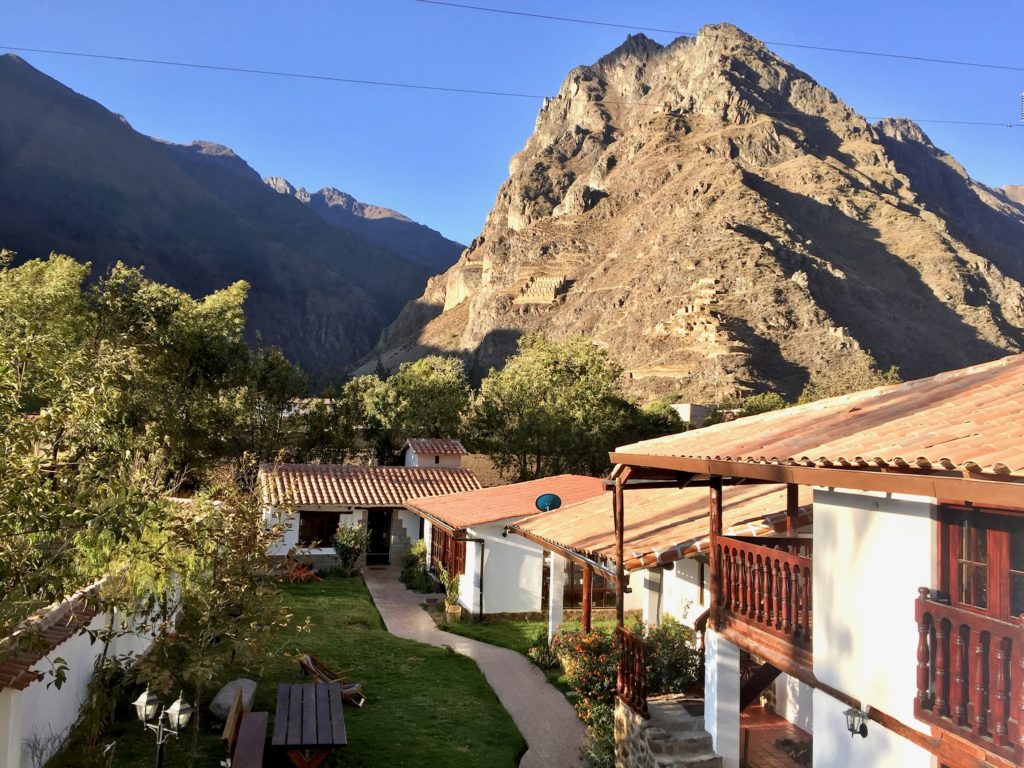
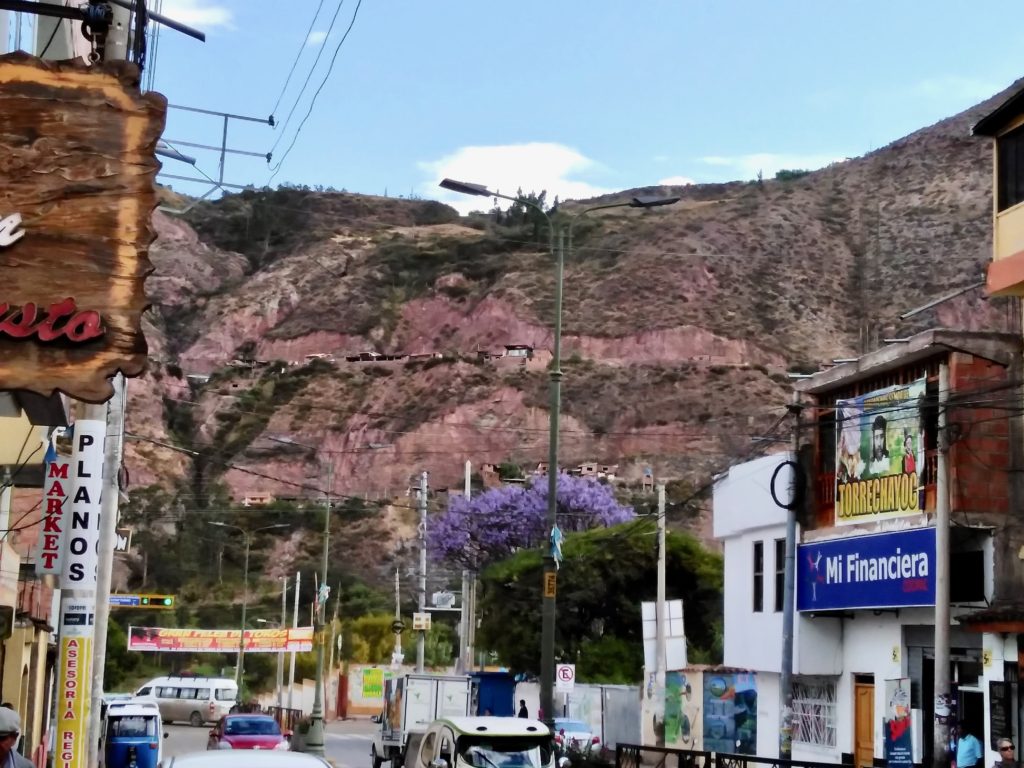
Strolling downtown Urubamba November 2019. Note: Urubamba (“Sacred River” in Quechan) is the name of both the river that flows through this Valley; and the name of this Valley town.
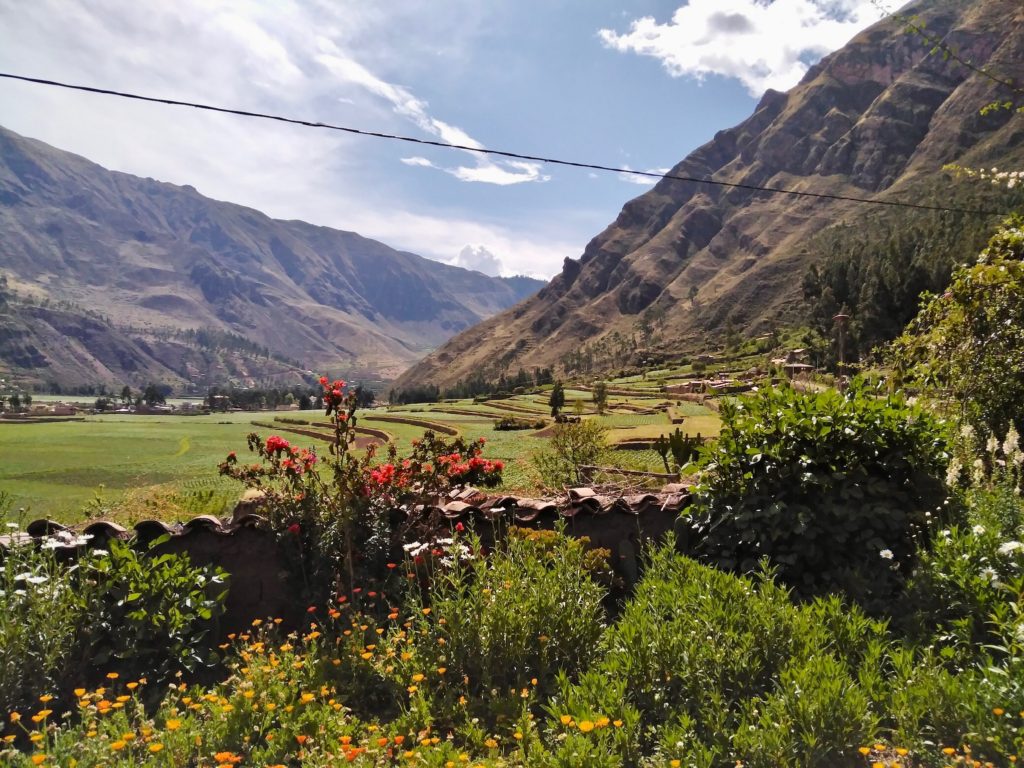
View from the rural Pisac guest house where this travelogue author stayed in January 2020. Note the terrace farm on right at the base of the mountain. See below about the critical need for terrace farming in the Sacred Valley.
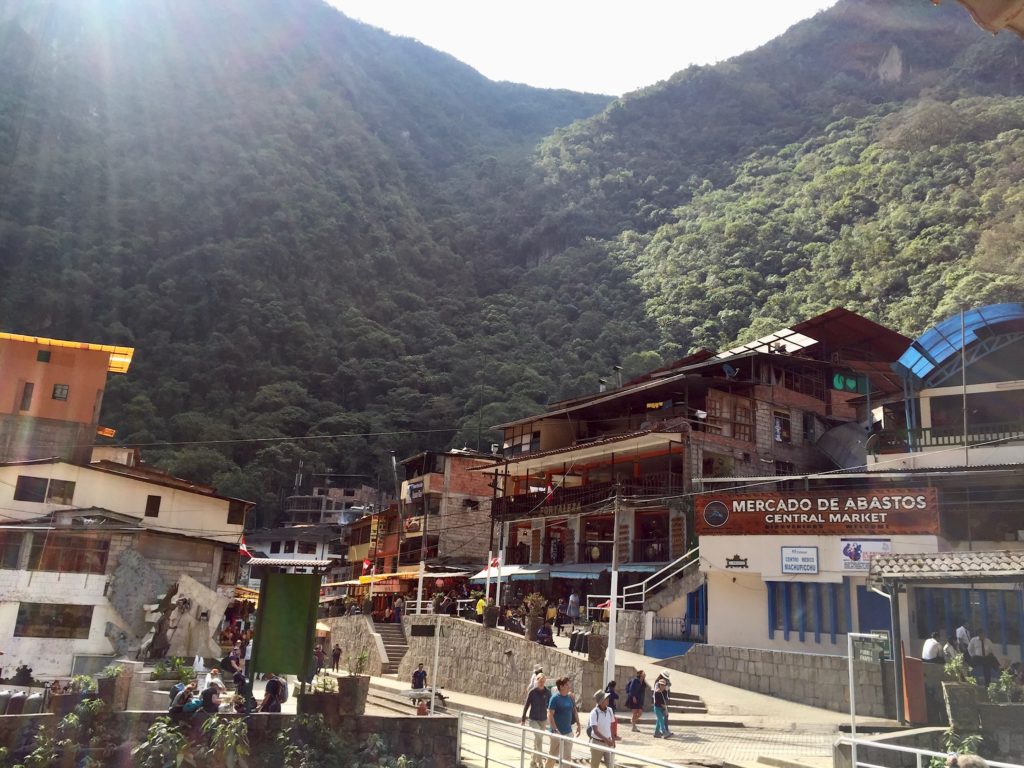
The beauty of the Sacred Valley is endless no matter what perspective one takes:
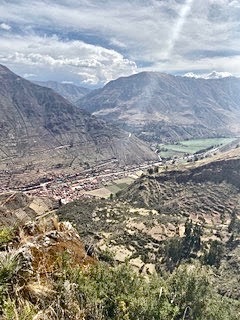
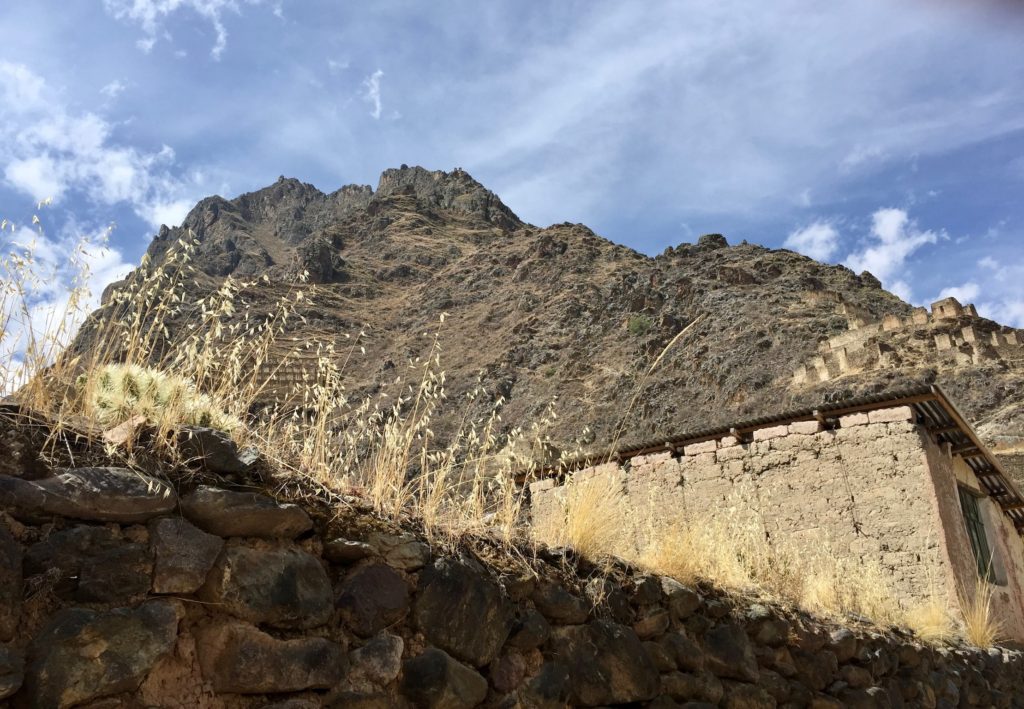
Can a Region Have a Twin? Sacred Valley, Peru and Santa Fe, New Mexico are Blood Brothers
Santa Fe, New Mexico (USA) and the Sacred Valley are doppelgängers (twins). Ollantaytambo, outside of Cusco is a smashing duplicate in miniature of Taos, New Mexico which is outside of Santa Fe. A New Mexico Tourist Brochure describes the trip from Santa Fe to Taos on the Old High Road: “The High Road to Taos Scenic Byway takes the traveler through an authentic remnant of Old Spain, still evident in the religion, architecture, topography, and people …..” That same description also fits the Sacred Valley perfectly: except the High Road has Pueblo Indians; the Sacred Valley has Quechans. Santa Fe, New Mexico is a near perfect analogue to Cusco, but Santa Fe is much more over-touristed. However, Cusco is catching up nicely in the over-touristed preciousness, sadly. And Ollantaytambo is the haunting spit image, a junior partner, to the Taos this author remembers from the early 80’s. The eerie similarity includes: geography (high desert surrounded by mountains); topography (red rocks and earth tones); indigenous populations of AmerIndians, Spanish heritage, Catholic traditions melded with local Indian culture; ; geographic layout; population base; level of economic development; dependence on tourism; oppression of the locals; native uprisings both historic and modern; etc, etc.
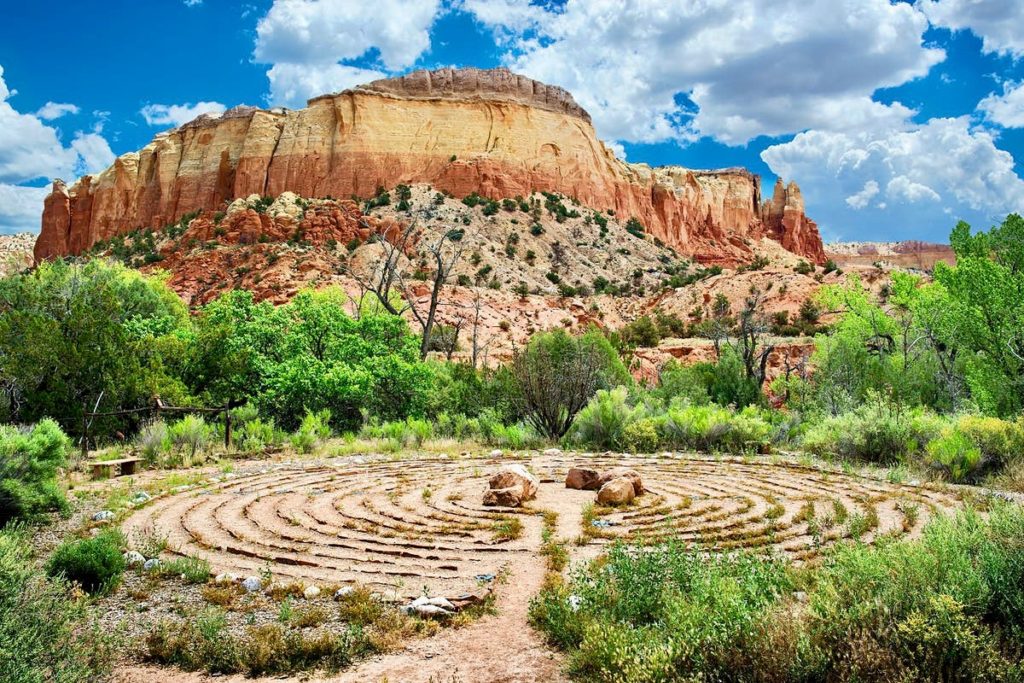
Left: Is this picture from Santa Fe, N.M. or the Sacred Valley, Peru? It is a hard choice objectively, but a good guess is that this picture was included to showcase Santa Fe, N.M. That would be a correct guess: Santa Fe.
The Incan Awakes: Agricultural and Cultural Revival in the Sacred Valley
The Ancient Incans were able to maintain their Empire because of both military might and success in feeding their people. In the mountain highlands, this level of agriculture required terrace farming. The current Incans [read: Quechans] are now reclaiming the efficient terrace farming perfected by their Incan forebearers. As noted in the above photo from the Pisac guest house — current terrace farming is visible in the picture.
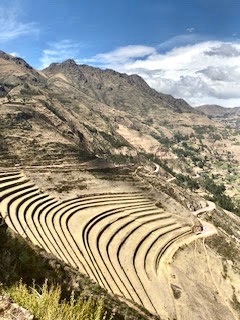
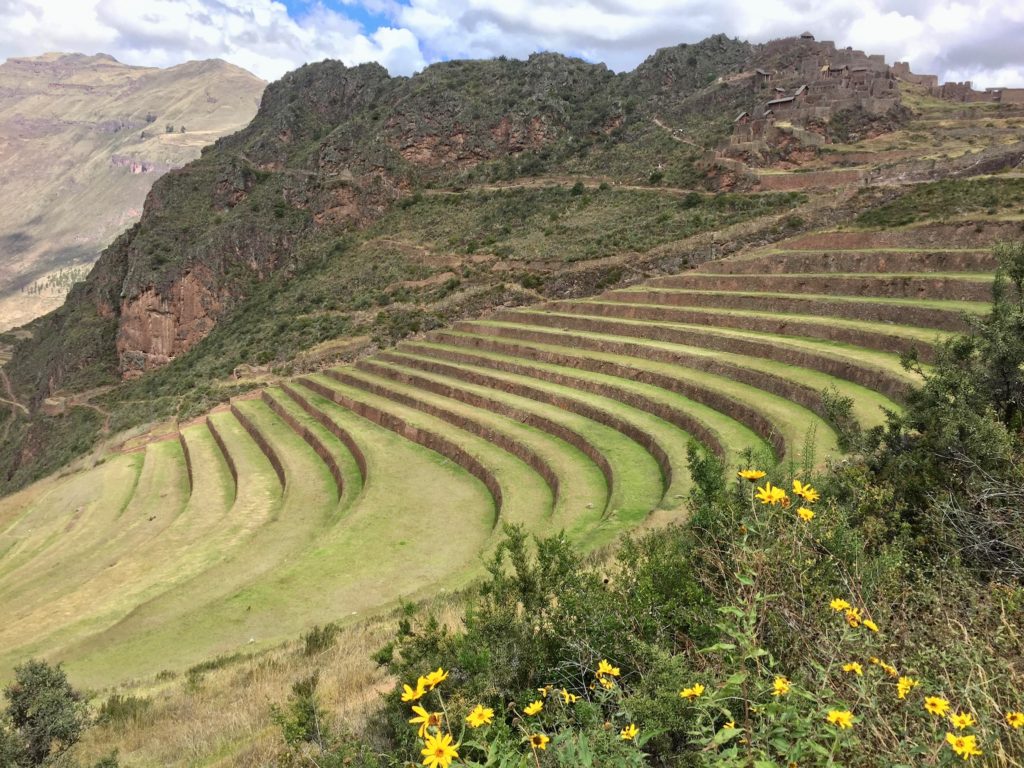
Above: A revived terrace farm in Pisac.
Left: Abandoned ancient Incan terrace beds. Picture of this ancient farm was taken from the hills surrounding Pisac. Note: Tomatoes, potatoes, chile peppers, quinoa and sadly, guinea pigs, were all foods that originated with the Incans.
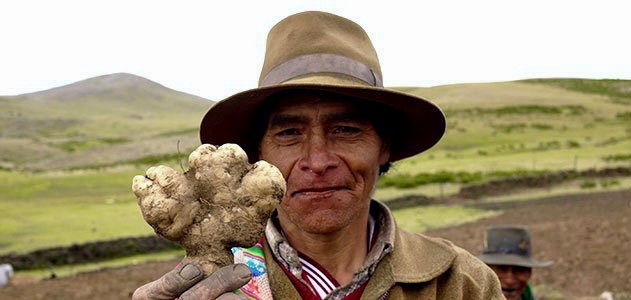
The locals are also bringing back ancient ways to prepare food. For example, “chuno” is again a popular way to prepare/preserve potatoes. Potatoes are naturally freeze-dried by freezing and thawing brought on by the cold Andean days and frost-bitten winter nights. Chuno gives potatoes a long shelf-life. Chuño is typically rehydrated by tossing it into a soup or stew pot. permaculturenews.org/2020/12/10/ancient-gardening-techniques-from-south-america/
The Quechans are also reviving the use of quallqas for long term food storage. The stored quinoa, corn, bean, seeds, llama jerky or alpaca meat could last up to four years.
Modern residents are resurrecting the use of Incan storehouses (qullqa) to hold food – traditionally round qullqa for corn and square qullqa for root crops. Qullqas are built into hillsides to take advantage of cool breezes, channeled through strategic openings. They are built for water drainage and frost prevention. The ancient qullqas were spaced about a day’s journey apart. A small qullqa would hold 3.5 cubic meters of food; while larger ones accept up to 5.5 cubic meters.
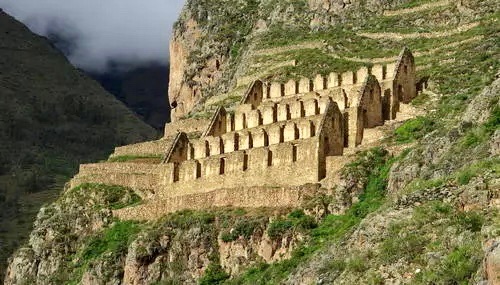
To this day, the ancient Incan farming methods produce the highest yield, best quality harvest — better than any modern farming techniques such as using chemical fertilizers or genetically altered crops. See, for example: https://www.smithsonianmag.com/history/farming-like-the-incas-70263217/.
The Ancient Incans had an agricultural research station in Moray to perfect their agricultural techniques to apply everywhere from high, mountanous areas or low lying coastal areas.
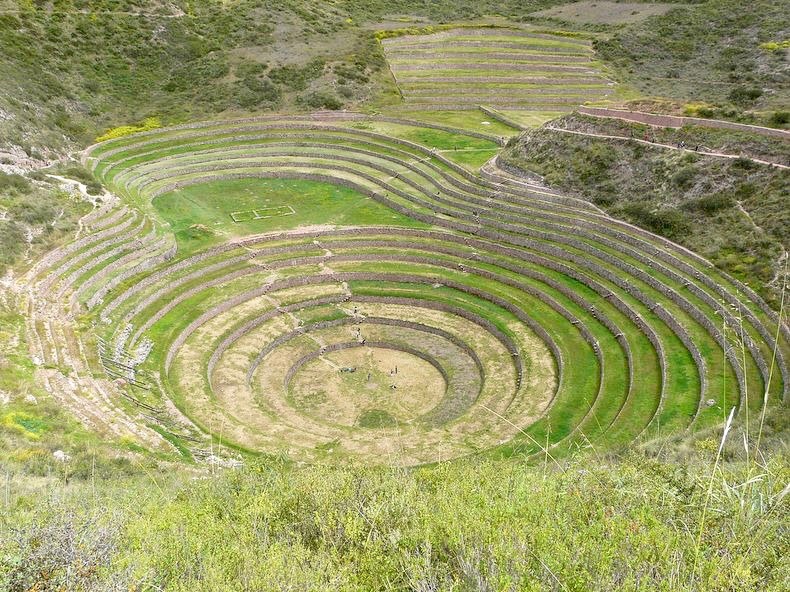
Struggles in Paradise: While the Sacred Valley locals are warm and inviting to outside visitors…
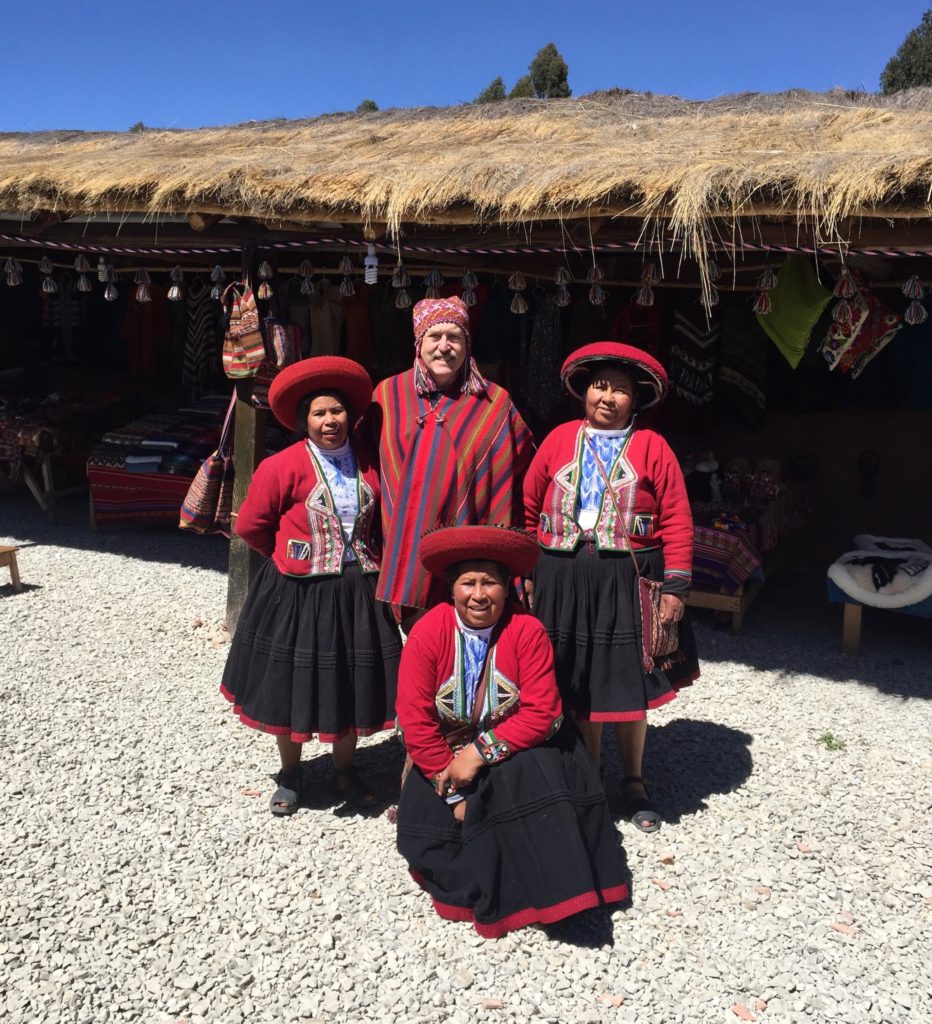
… but all is not as peaceful as it looks at first blush, here in the Sacred Valley.
Peasant Unrest in this Mountainous Paradise: Modern Day Incans Rise Up for Good Reasons: They Have a Long Memory of Historic Injustice and the Quechans are Still Being Screwed Over
Simmering tensions in the Valley boil over on occasion: then, the peasants rise up, pitchforks in hand. The historic oppression, corruption and violations of what we now call basic human rights and plain economic injustice all continues to this day. All that nightmarish, evil oppression did not end with throwing off the Colonial Yoke in 1821 when José de San Martín liberated Peru from Spanish dictatorship. The campesinos and agricola (farmers) were never liberated; they continue to be ground into the Peruvian dirt. Changing this uneven status quo has proven slow and painful, but it is a mostly peaceful struggle. However, there two areas of where tensions fire up the spark of revolt in the Sacred Valley. Number one is mineral extraction (mining and oil) for its contamination and pollution; over development of rural areas; siphoning off the wealth (profits) for outsiders; and degrading the lives and health of the locals. Number two is the proposed new international airport in the little scenic town of Chinchero, a tiny town, home to the Chinchero Indians, part of the Quechan umbrella of local tribes.
Currently, the closest airport to Machu Picchu (and Sacred Valley) is in Cusco, but the local airport is not international. Tourists must go through Lima first; and catch a connecting flight to Cusco. Then, from Cusco, it is a one day trek just to get to the entrance to Machu Picchu; a trek that is a bit of a hassle. From Cusco, travelers must: take a taxi or bus twenty five miles to the nearest train station, and then wait for the next, expensive train for a several hour ride to the base town of Agua Calientes below Machu Picchu. There is an easy alternative to this one-day transport hassle from Cusco. Travelers can avoid the taxi and train by taking a three or four day hike up the Andean mountains. The ambitious hikers will enter Machu Picchu on foot; smugly knowing that they did not pay for that expensive, comfy train ride.
Now, if the central authorities and banks can just build this new, international airport in Chinchero. This airport would solve the tourist industry woes and streamline tourism traffic straight into the heart of the Valley . The Chinchero International Airport would accept direct flights from around the world. Chinchero International would be a hassle-free hop, skip and plane roar from Machu Picchu itself. Chinchero, only 37 miles (60 kilometers) from Machu Picchu, is a picturesque Sacred Valley town that in 2017 had a population of around 10,500. Serious minds have concluded that the airplane jet roar, flight patterns, airport vibrations, increased human traffic and roads; plus all the pollution, will all work together to undermine Machu Picchu, literally and figuratively. Swirl into this nightmare the inestimable damage in the entire region (pollution, congestion, traffic, massive freeways, shopping malls, billboards, litter, KFC, movie stars and swimmin’ pools.) All this contemporary horror would be needed if the airport dumps hundreds of thousands of tourists per month straight into the heart of Machu Picchu and the Sacred Valley. Think of building a new Newark International Airport on the outskirts of Rapid City, South Dakota for the ease of getting to nearby Mount Rushmore. Or a brand-spankin’ new international airport only 37 miles away from Niagara Falls.
If the Chinchero airport is built, kiss the bucolic Sacred Valley goodbye. Do the locals want this development as a way to get a leg up in the modern world? Hell, no — not development this way that rapes the land and pillages the locals! That is why whenever this proposal rears its ugly head the locals go ape — rip up the highway, blockade traffic, boycott, protest, scream bloody murder, etc. Only a small percentage of the local population supports this idea; it is a safe guess to say the supporters are those who would get direct economic gains. The winners would not be the local campesinos and Quechan peasants. So far, local resistance and pressure from international organizations has stopped this airport plan dead in its tracks several times. However, this proposal keeps reemerging like Chucky himself** [Chucky = A movie about a murderous nightmare doll that could not be killed. Chucky kept re-emerging out of every one of his death scenes]
However, the broader fight erupts over the other economic get-rich scheme for the already well off: mineral extraction by outside corporations allied with the usual corruption and government incompetence. Mining was the cause of conflict when demonstrators seized the city of Puno, on Lake Titicaca in May 2011, blockading the Bolivian border and stranding hundreds of tourists. A few years later, oil companies were the focus of local outrage. Indigenous oil protesters ended a 43 day protest on October 31, 2017 after signing a negotiated agreement with government regarding the impacts of oil production in the area such as pollution and the long-term effects of production on the local culture and economy. https://www.worldnomads.com/travel-safety/south-america/peru/peru-protest-safety-tips-what-to-watch-out-for-to-stay-safe.
Thus, protests are not rare, even in the rarified atmosphere of bucolic Pisac – truly God’s Green Valley. Pisac is known for it’s spontaneous peasant toll roads or complete highway blockades:
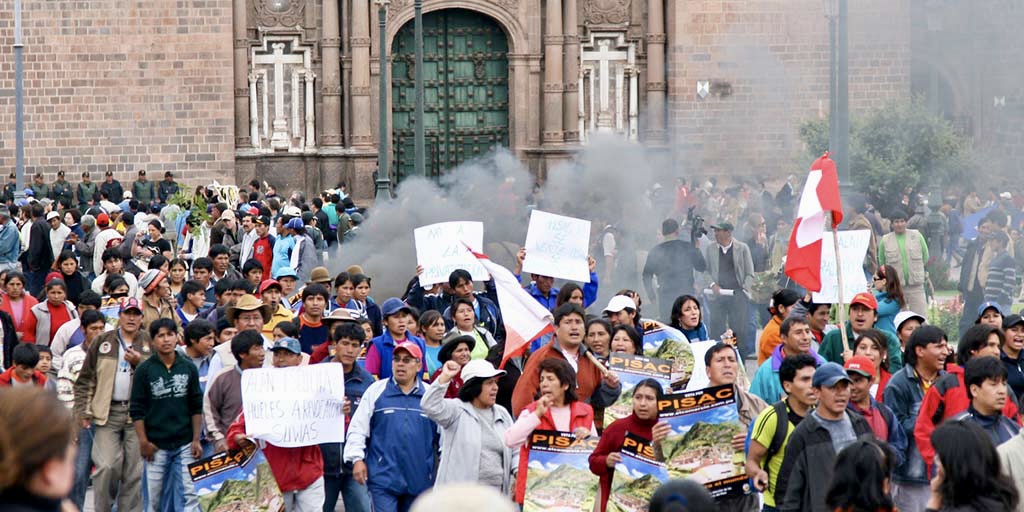
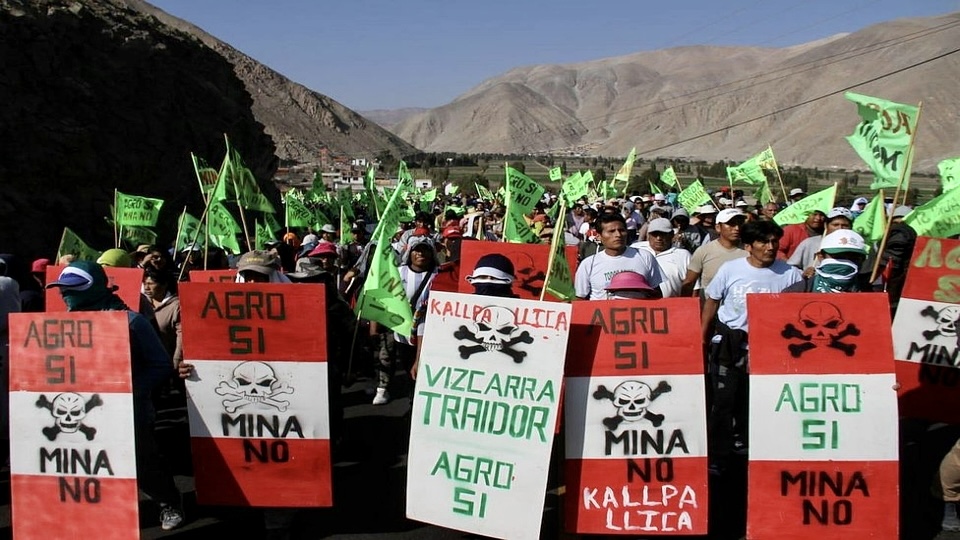
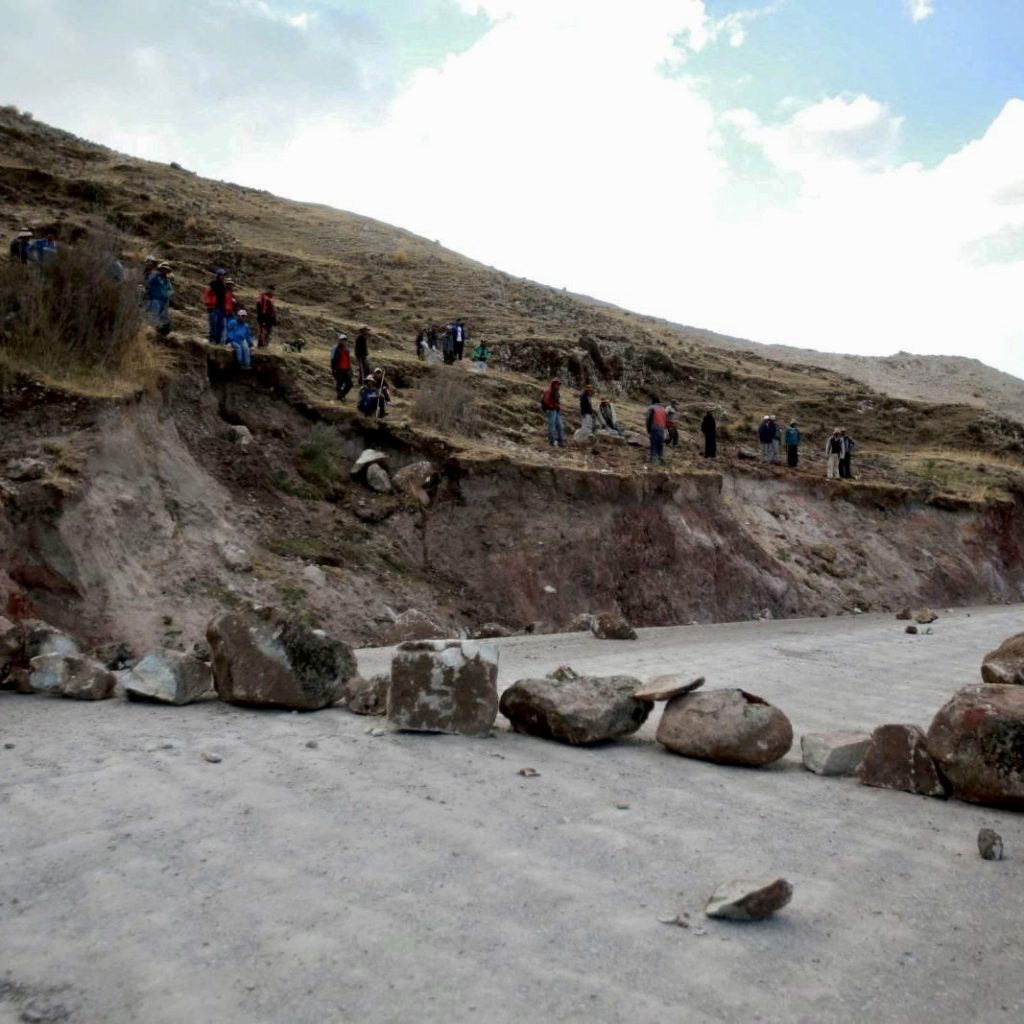
Warning: If there is a full blockade; you are ordered to turn back. Do what the kind man tells you. IF You cross this blockade against instructions, you will be given a courtesy warning. You will be given the chance to exit the car before it is burned in place. Your call.
The beating heart of the Incan Empire is not dead. The Incans live on. And increasingly, the beat is quickening in the growing assertion of Quechan traditional culture, traditions and taking back the Indigenous power cruelly crushed by the Spanish Invaders, and then by their Mestizo allies and Western partners. What does the future hold? Quién sabes? But it is an area worth watching — and exploring.
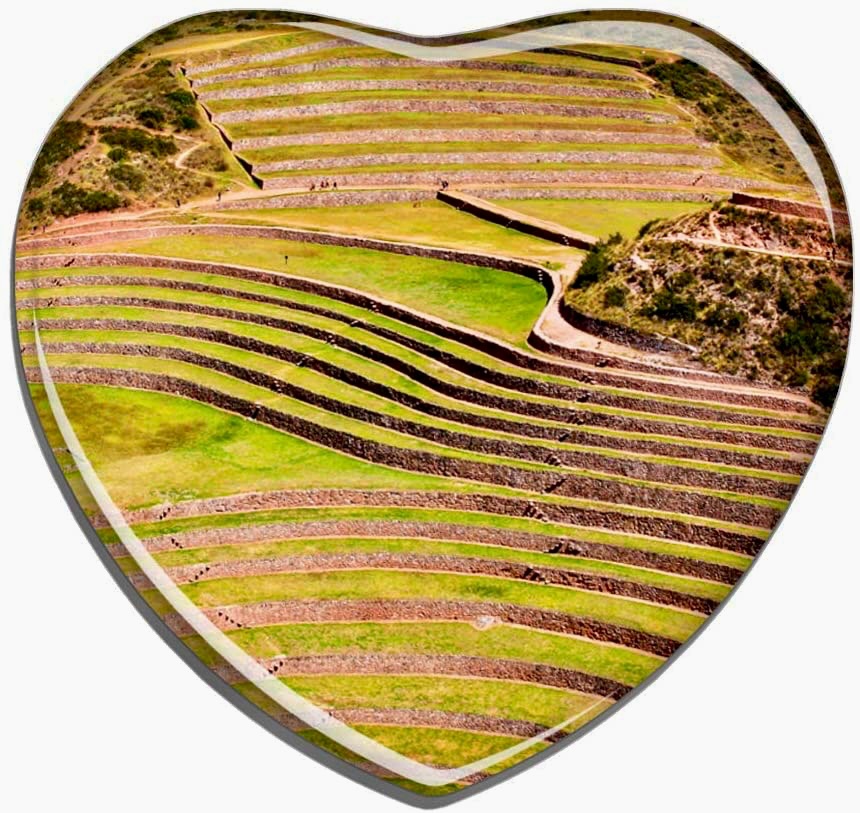
Bonus Photos. I could not make this up. Outside of Ollantaytambo is a “lodge” that is not merely nestled in the hills — the Skylodge Adventure Suites are built smack dab in the middle of a sheer rock cliff. Guests have to mountain climb up the cliff wall to get to the Skylodge. My photos of the Skylodge itself (remember I had an IPhone 6) are not good, so I use below a photo from the Skylodge website. I took the fuzzy photo of guests inching their way up the rock face to get to their night’s cozy lodging.
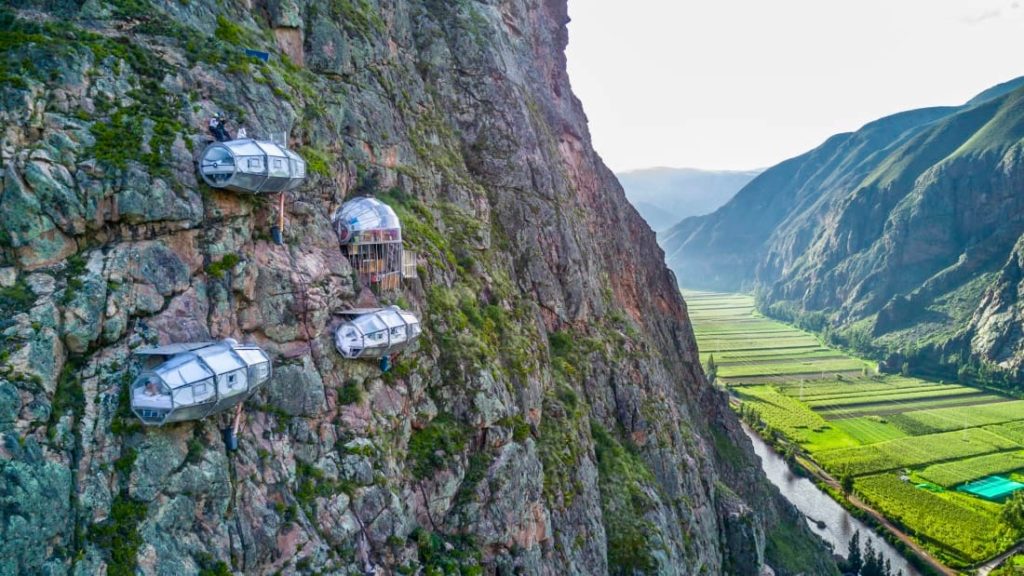
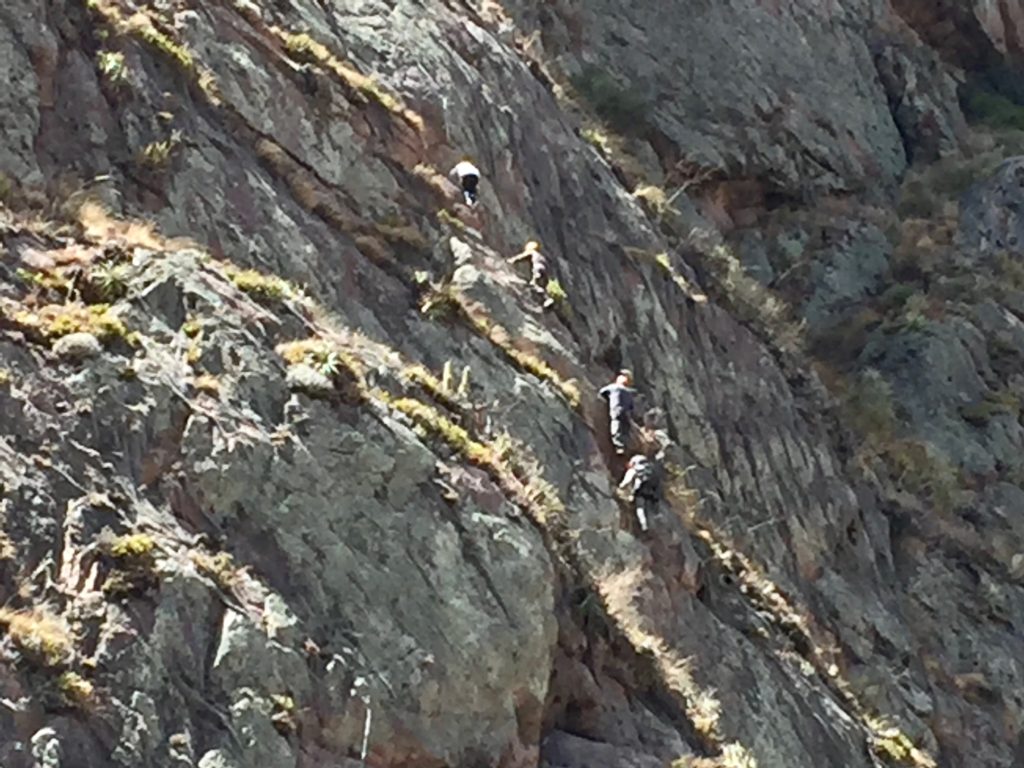
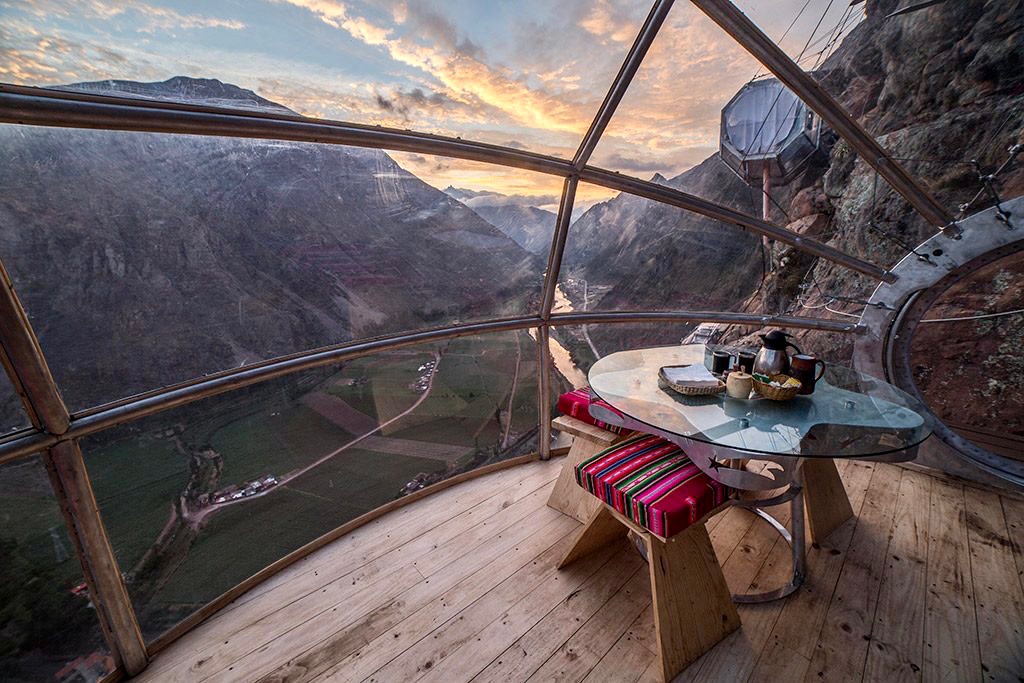
Shameless Plug. Please consider signing up for a FREE subscription to this website which is both a travelogue and literary journal. Notices of new postings, about three new articles a month, will be sent to your email inbox. Note: Your information will never be marketed, sold, or used in any way. The marketing of personal data is a horrible idea.
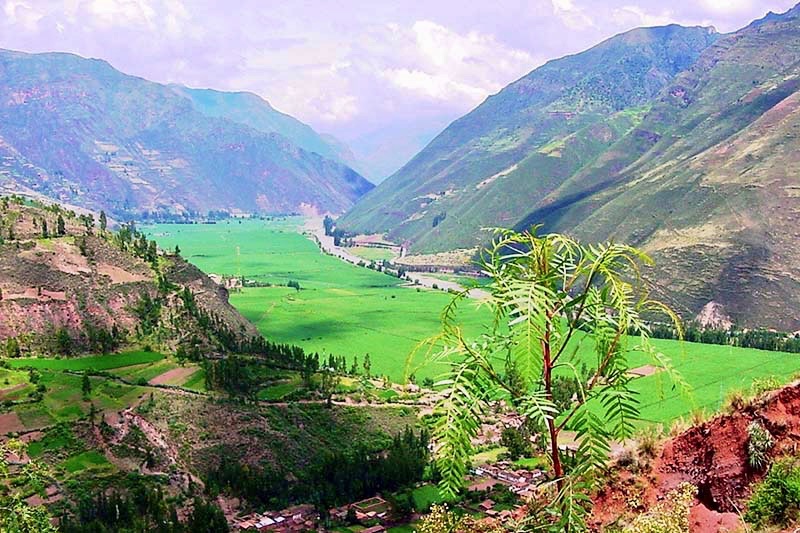
Dec. 1976 the family went by bus from La Paz to Puno. We went by train to Cuzco and from Cuzco to Machu Picchu. I was blown away by the beauty of the valley between Cuzco and MP. I had never seen such a scenic valley in South America. It was a real treat on the way to Machu Picchu. If it was in the US it would be a National Park.
Good article!